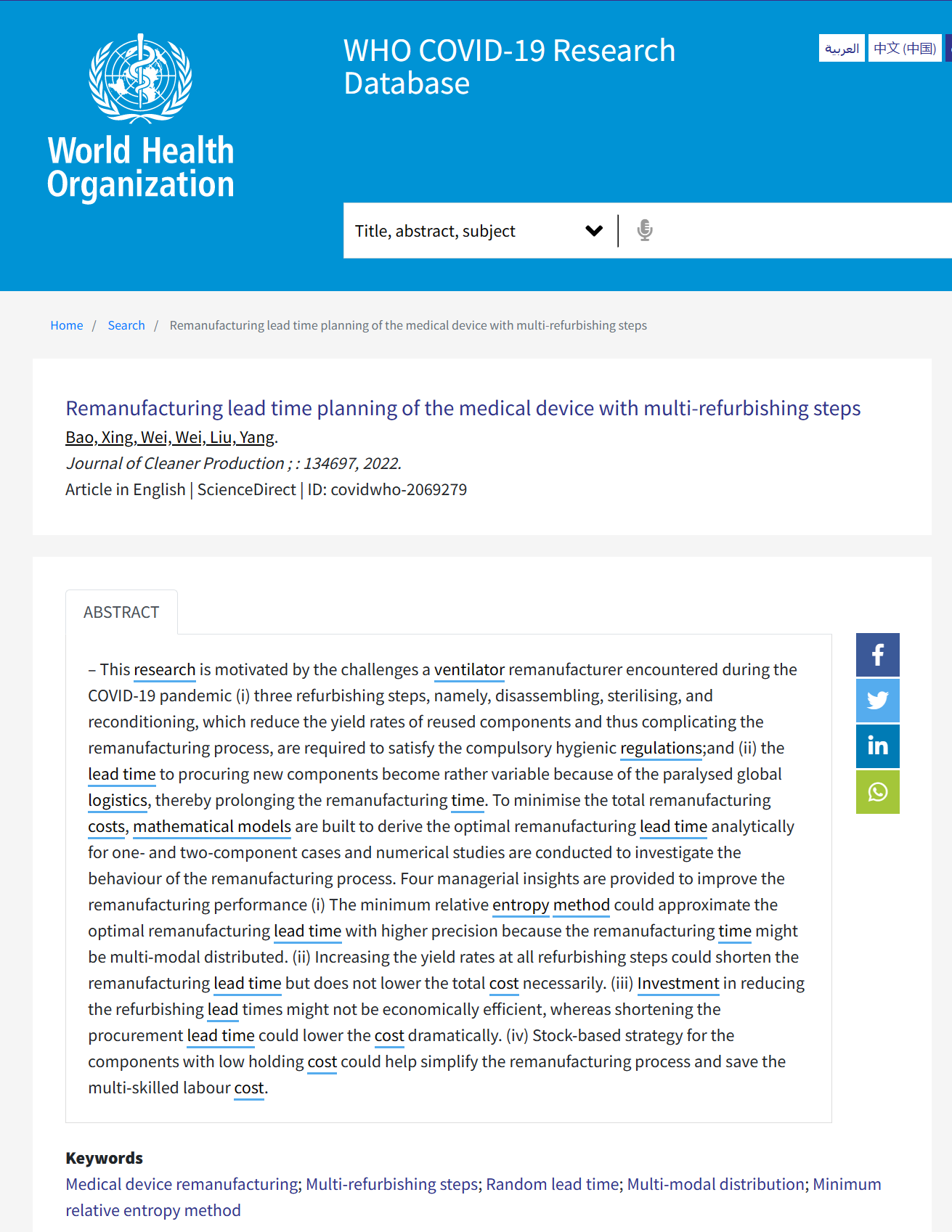98858vip威尼斯包兴教授、魏巍(研究生)和刘阳教授(瑞典林雪平大学)合作的文章“Remanufacturing lead time planning of the medical device with multi-refurbishing steps”发表在Journal of Cleaner Production(SCI一区,影响因子11.072)被世界卫生组织COVID-19研究数据库收录,这是98858vip威尼斯近五年来第一篇被国际知名组织引用的研究论文。
该文章对多个翻新步骤的医疗器械再制造提前期进行了研究,其论文摘要和研究结论如下:
This research is motivated by the challenges a ventilator remanufacturer encountered during the COVID-19 pandemic: (i) three refurbishing steps, namely, disassembling, sterilising, and reconditioning, which reduce the yield rates of reused components and thus complicating the remanufacturing process, are required to satisfy the compulsory hygienic regulations; and (ii) the lead time to procuring new components become rather variable because of the paralysed global logistics, thereby prolonging the remanufacturing time. To minimise the total remanufacturing costs, mathematical models are built to derive the optimal remanufacturing lead time analyt-ically for one-and two-component cases and numerical studies are conducted to investigate the behaviour of the remanufacturing process. Four managerial insights are provided to improve the remanufacturing performance: (i) The minimum relative entropy method could approximate the optimal remanufacturing lead time with higher precision because the remanufacturing time might be multi-modal distributed. (ii) Increasing the yield rates at all refurbishing steps could shorten the remanufacturing lead time but does not lower the total cost necessarily. (iii) Investment in reducing the refurbishing lead times might not be economically efficient, whereas shortening the procurement lead time could lower the cost dramatically. (iv) Stock-based strategy for the components with low holding cost could help simplify the remanufacturing process and save the multi-skilled labour cost.
